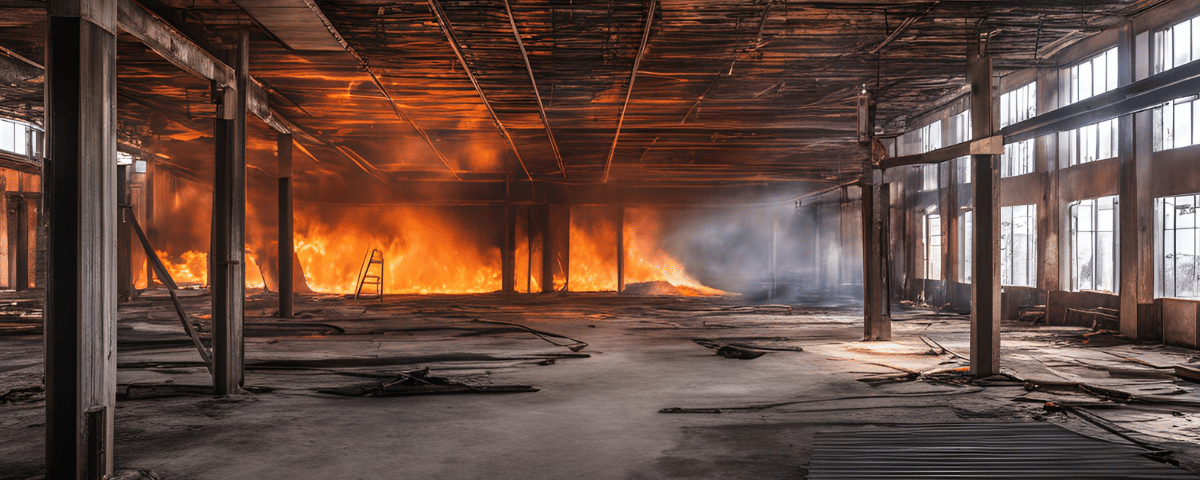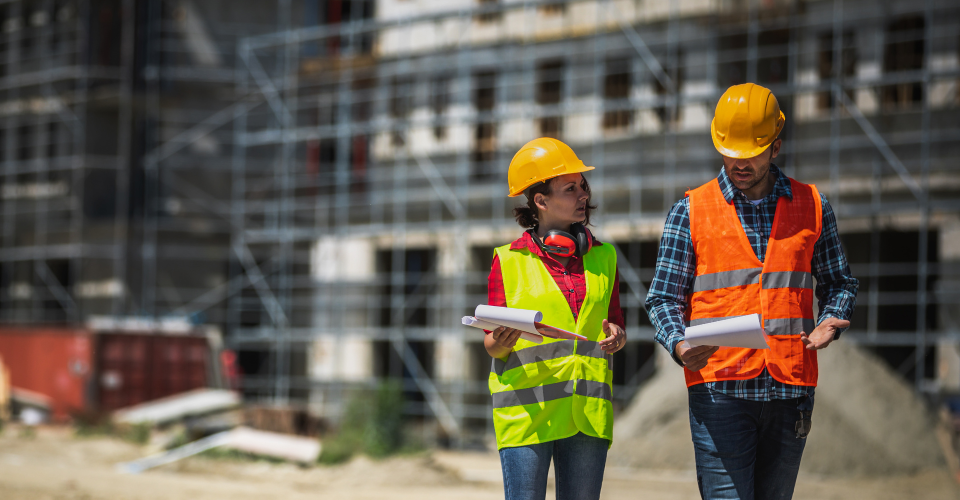The Ins and Outs of Fire Risk Assessments

Fire risk assessments are more than just a legal requirement—they’re a fundamental aspect of responsible property management and business operations. Let’s take a look at everything you need to know to ensure the safety of your premises and full compliance with UK law.
What is a Fire Risk Assessment?
Remember, when it comes to fire safety, prevention is always better than cure. A well-executed fire risk assessment is an investment in the safety of your people, property, and business continuity.
A fire risk assessment is a methodical and detailed evaluation of a building or premises to identify potential fire hazards and assess the level of risk they pose. It forms the foundation of any effective fire safety strategy.
What are the 5 main components of a fire risk assessment?
1. Identifying potential fire hazards
The first step includes identifying any potential fire hazards in your building. The most important questions here are, ‘how could a fire start and what could burn?’ This includes examining all possible sources of ignition (e.g., electrical equipment, heating systems, naked flames), fuel (e.g., flammable liquids, paper, textiles), and oxygen sources (e.g., air conditioning systems, oxidizing chemicals).
2. Determining who might be at risk
This not only considers employees and regular occupants, but also visitors, contractors, and especially vulnerable individuals such as the elderly, children, or those with disabilities that might frequent the building.
3. Evaluating the risks and deciding on precautions
Once you’ve identified potential fire hazards and people at risk, the next crucial stage in your fire risk assessment is to evaluate, remove, or reduce the risks. This step is important in preventing accidental fires and minimising the overall fire risk in your premises.
Removing and reducing fire risks at this stage might include:
- Securing or removing any flammable liquids that could be used to start a fire
- Reviewing existing fire protection systems
- Keeping heat sources and anything that could cause a spark apart
- Deciding who oversees the evacuation procedure
4. Recording findings, planning and implementing them
All significant findings must be documented, including the actions taken to reduce or eliminate risks. This means you need to keep a record of all fire hazards that you have identified as well as what was done to remove or reduce the risks.
All businesses should have a clear plan detailing what measure they are taking to prevent a fire and what steps will be taken to protect people in the building if a fire were to break out. Once a clear plan is established, all staff should be trained on exactly what to do in the event of a fire.
5. Reviewing and updating the assessment regularly
Fire risk assessments are not one-time events but ongoing processes that require regular review and updates.
Who Needs a Fire Risk Assessment?
In the UK, fire risk assessments are mandatory for virtually all non-domestic premises. This broad category includes:
- Offices and shops: From small retail outlets to large corporate offices, all commercial spaces require assessment.
- Factories and warehouses: These often present unique fire risks due to the presence of machinery, chemicals, and stored goods.
- Hotels and restaurants: The combination of cooking equipment, high occupancy, and overnight stays necessitates rigorous fire safety measures.
- Schools and educational institutions: The safety of students and staff is crucial, requiring comprehensive fire risk strategies.
- Healthcare facilities: Hospitals, clinics, and care homes must have robust fire safety measures due to the vulnerability of patients and the presence of medical equipment.
- Shared areas of multi-occupied residential buildings: This includes communal areas in apartment blocks and student accommodations.
- Places of assembly: Theatres, cinemas, sports venues, and places of worship all fall under this category.
- Outdoor events and venues: Even temporary structures and open-air events require fire risk assessments.
Essentially, if you’re responsible for a business or non-domestic premises, regardless of size or purpose, you need a fire risk assessment.
Different Types of Fire Risk Assessments
Fire risk assessments can vary based on the complexity of the premises and the level of risk involved.
The main types of risk assessments are:
Type 1: Common Parts Only (Non-Destructive)
This is the most basic form of fire risk assessment, suitable for most premises. It involves a visual inspection of accessible areas, common areas (not private dwellings or flats) and doesn’t include looking behind walls or under floorboards. The only exception is where you may have arranged to view the tenant’s front doors as part of the assessment.
A small office building might undergo a Type 1 assessment. The assessor would visually inspect corridors, stairwells, and reception areas, checking for obvious fire hazards, escape routes, and fire safety equipment. They wouldn’t examine inside individual offices or behind walls.
Type 2: Common Parts Only (Destructive)
This assessment is more invasive, involving some destructive inspection in addition to the visual check. It might include looking inside walls or under floors to assess fire separation between different parts of the building.
This type of assessment might be done in an older apartment building. The assessor might remove small sections of wall panelling to check the fire resistance between apartments and common areas, or lift floor tiles to examine the integrity of fire stops between floors.
Type 3: Common Parts and Flats (Non-Destructive)
This type includes all the elements of Type 1 and extends the assessment to include the interior of a sample of individual flats or rooms, in addition to common areas. It’s often used in multi-occupancy residential buildings.
A university dormitory might undergo a Type 3 assessment. The assessor would inspect common areas like hallways and lounges, and also enter a selection of student rooms to check for fire hazards, assess escape routes, and evaluate fire detection systems within individual living spaces.
Type 4: Common Parts and Flats (Destructive)
This assessment combines destructive inspection of both common parts and the interior of flats or rooms. It’s typically used when there are serious concerns about the overall fire precautions in a building.
A high-rise residential tower with a history of fire safety concerns might require a Type 4 assessment. The assessor would conduct a thorough inspection of all common areas, enter a sample of apartments, and perform destructive testing (such as removing sections of walls or ceilings) to fully assess fire separation and hidden risks throughout the building.
The type of assessment needed depends on factors such as:
- Building age and construction materials
- Occupancy type and density
- Previous fire incidents or near-misses
- Complexity of the building layout
- Presence of high-risk activities or materials
Who is Responsible for Carrying Out Fire Risk Assessments?
The responsibility for ensuring a fire risk assessment is carried out falls on the “responsible person.” The responsibility typically falls on:
- For workplaces: The employer has the primary responsibility. In shared workplaces, there may be a need for cooperation between different employers.
- For business premises: If you’re the owner but lease out the property, you may still have responsibilities for fire safety in common areas.
- For shared residential buildings: The landlord, freeholder, or managing agent usually takes responsibility for common areas.
- For self-employed people with their own premises: You are responsible for your own fire safety.
While the responsible person doesn’t need to personally conduct the assessment, they must ensure that it is carried out by a competent person. A competent person is someone with sufficient training, experience, or knowledge to be able to implement the full preventative and protective measures required by the legislation.
How Often Should Fire Risk Assessments be Reviewed?
There’s no fixed timeframe in law for reviewing fire risk assessments. However, best practice suggests:
- Review after any fire-related incident: Even a minor fire or near-miss should trigger a review to assess whether current measures are adequate.
- Immediate review following any significant changes to the premises or occupancy: This could include structural alterations, changes in work processes, or introduction of new equipment.
- Annual reviews for most premises: This ensures that any changes in the building, its use, or its occupants are accounted for.
- More frequent reviews for high-risk or rapidly changing environments: For example, factories with frequent changes in processes or materials might need quarterly reviews.
Factors that might lead to more frequent reviews include:
- High staff turnover
- Frequent changes in building layout or use
- Introduction of new equipment or processes
- Changes in the local environment, such as new neighbouring businesses or buildings being constructed.
Costs of Fire Risk Assessments in the UK
The cost of a fire risk assessment can vary widely depending on several factors:
- Size and complexity of the premises
- Type of assessment required
- Location of the property
- Any additional services included (e.g., producing fire safety policies, staff training)
As a rough guide, prices start from £175.00 +VAT and costs typically fall into these ranges:
- Small premises: Small shops, single-story offices
- Medium premises: Larger retail spaces, multi-story offices, small hotels
- Large premises: Warehouses, large hotels, hospitals, shopping centres
How to Obtain a Copy of Your Building’s Fire Risk Assessment
As an occupant or employee, you have the right to see the fire risk assessment for your building. To obtain a copy:
- Ask the responsible person or building management:
- This should be your first port of call. The responsible person is legally obliged to make the significant findings of the risk assessment available to employees and residents.
- If refused, you can request it from your local fire and rescue authority:
- They have the power to demand a copy from the responsible /competent person and can provide it to you if they deem it necessary.
Penalties for Non-Compliance
The consequences of not having a suitable and sufficient fire risk assessment can be severe:
- Fines:
- Minor offenses can result in fines of up to £5,000
- Major offenses carry unlimited fines
- Imprisonment:
- Serious breaches can lead to up to two years imprisonment
- Prohibition notices:
- These can force the closure of premises until fire safety measures are improved
It’s worth noting that enforcement action is usually taken as a last resort. Fire authorities typically work with businesses to achieve compliance through education and support before resorting to legal action.
How CQMS Can Help with Fire Risk Assessment
At CQMS, we understand the complexities of fire safety legislation and the critical importance of thorough fire risk assessments. Our team of experienced professionals offers:
- Comprehensive fire risk assessments tailored to your specific premises and needs
- Clear, actionable recommendations to improve fire safety
- Ongoing support and guidance to help you maintain compliance
- Assistance with developing and implementing fire safety policies and procedures
Don’t leave fire safety to chance. Partner with CQMS to ensure your business is protected, compliant, and prepared. Contact us to schedule your fire risk assessment and take control of your fire safety strategy.






